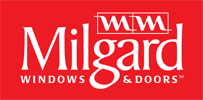Fiberglass Fenestration Comes into its Own
The NFRC focuses more on energy efficiency and some feel it is the only reliable way to determine energy properties and compare the energy-efficiency of fenestration products. NFRC rates U-Value, Solar Heat Gain Coefficient (SHGC), Visible-Light Transmittance (VT), Air Leakage (AL) and Condensation Resistance (CR). All major standards and programs for window energy efficiency, from tax credits to ENERGY STAR®, are based on NFRC criteria.
A joint program of the U.S. Department of Energy and the Environmental Protection Agency, ENERGY STAR® aims to protect the environment through energy efficient products and practices. In 2010, ENERGY STAR® window performance criteria were tightened. In the Northern U.S. climate zone U-Values range from under 0.30 up to 0.32, while North Central and South Central Zones require 0.32 and 0.35 or less, respectively, and the Southern Zone limits U-Value to 0.60. With typical U-Values of 0.22-0.29, fiberglass windows easily exceed these new requirements and, like other types of windows, can always gain required solar heat gain coefficients by incorporating spectrally-selective low-E glazing. Further updates of ENERGY STAR® will likely be adopted in 2011 which will likely go into effect in 2013 or 2014. The U.S. Environmental Protection Agency (EPA) will likely put forth new, more rigorous guidelines that will make qualified new homes at least 20 percent more energy-efficient than homes built to the 2009 International Energy Conservation Code. A key focus will be a complete thermal enclosure system, involving comprehensive air sealing, properly insulated assemblies and high-performance windows. Other upgrades appear to involve field testing, durability and installation, and the possibility of life cycle analysis-all factors in which fiberglass windows are likely to clear the raised bar.
The Window and Door Manufacturers Association (WDMA) also conducts a certification program not only focusing on window performance but providing standards for manufacturing facilities. Conformance is determined by in-plant inspection of the manufacturing facilities and by sampling and testing of products.
Warranty
Warranties and guarantees can differ considerably, and the difference may factor into the decision to specify one manufacturer's product over another. A residential window warranty may be a "limited warranty" or a "limited lifetime warranty" or even a "full lifetime warranty" for as long as the buyer resides in his home. The distinction is that full warranties meet more stringent federal minimum standards for written warranties on consumer products than limited warranties. Under a full warranty, the warrantor must repair or replace the products at no charge to the consumer, and may only refund the purchase price in fulfillment of the warranty when that's what the consumer requests.
In contrast, under a limited warranty, the warrantor may charge service costs and fees related to repair or replacement. If parts and labor are provided at no charge under the limited warranty, the limited warrantor may reserve the right to refund the purchase price to the consumer in fulfillment of the warranty rather than making the repairs or replacing the products at no charge. In a full lifetime warranty, trained technicians repair or replace any defective window, free of cost to the original homeowner-parts and labor included. If repair is not commercially practical or cannot be made in a timely fashion, the manufacturer may replace the product at no charge. While a full lifetime warranty is not automatically fully transferable-that is, the window guarantee will be annulled if the consumer sells his home-some companies will extend full warranty coverage for a certain number of years from the effective date of the original warranty to the successive owners, free of charge.
While a full lifetime warranty on fiberglass windows offered by some manufacturers is advantageous for consumers, typically fiberglass windows come with a limited warranty consisting of a 10-year warranty on non-glass parts and 20-year warranty on glass (non-laminated). By comparison, wood windows, and wood windows with cladding, generally carry a 10-year warranty on non-glass components, in large part due to their susceptibility to decay through water damage.
Conclusion: A Sustainable Future for Fiberglass Windows
With attractive profiles, longevity, low maintenance and a host of environmental benefits, fiberglass windows offer architects a viable solution in designing an energy-efficient building envelope that is as aesthetically pleasing as it is green.
|









